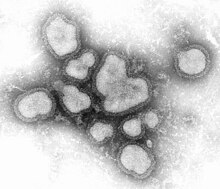Virus
Viruses are microscopic infectious agents that are not capable of independent life. They are considered the simplest life forms or biological entities because, unlike other organisms, they do not have a cellular structure and do not perform any metabolic functions outside the host cell.
The definition of viruses is based on their basic properties:
Microscopic size: Viruses are so small that they cannot be seen with an ordinary light microscope. Their size ranges from a few nanometers to a few micrometers.
Inability to live independently: Viruses do not have the ability to reproduce or carry out metabolic processes outside the host cell. For their replication and functionality, they need to enter a living cell, where they use cellular mechanisms for their reproduction.
Genetic material: Viruses have either DNA (deoxynucleic acid) or RNA (ribonucleic acid) as a carrier of genetic information. This genetic material is surrounded by a protein envelope called a capsid.
Infectivity: Viruses have the ability to infect and reproduce in a host cell. Once inside the cells, they can cause various diseases, from common infections to serious pandemics.
Viruses are present in all living organisms, including humans, animals, plants and microorganisms. Their ability to infect cells and alter the functions of organisms makes them both potentially dangerous pathogens and tools in biotechnology and medicine, such as vaccines and gene therapy.























































































































































